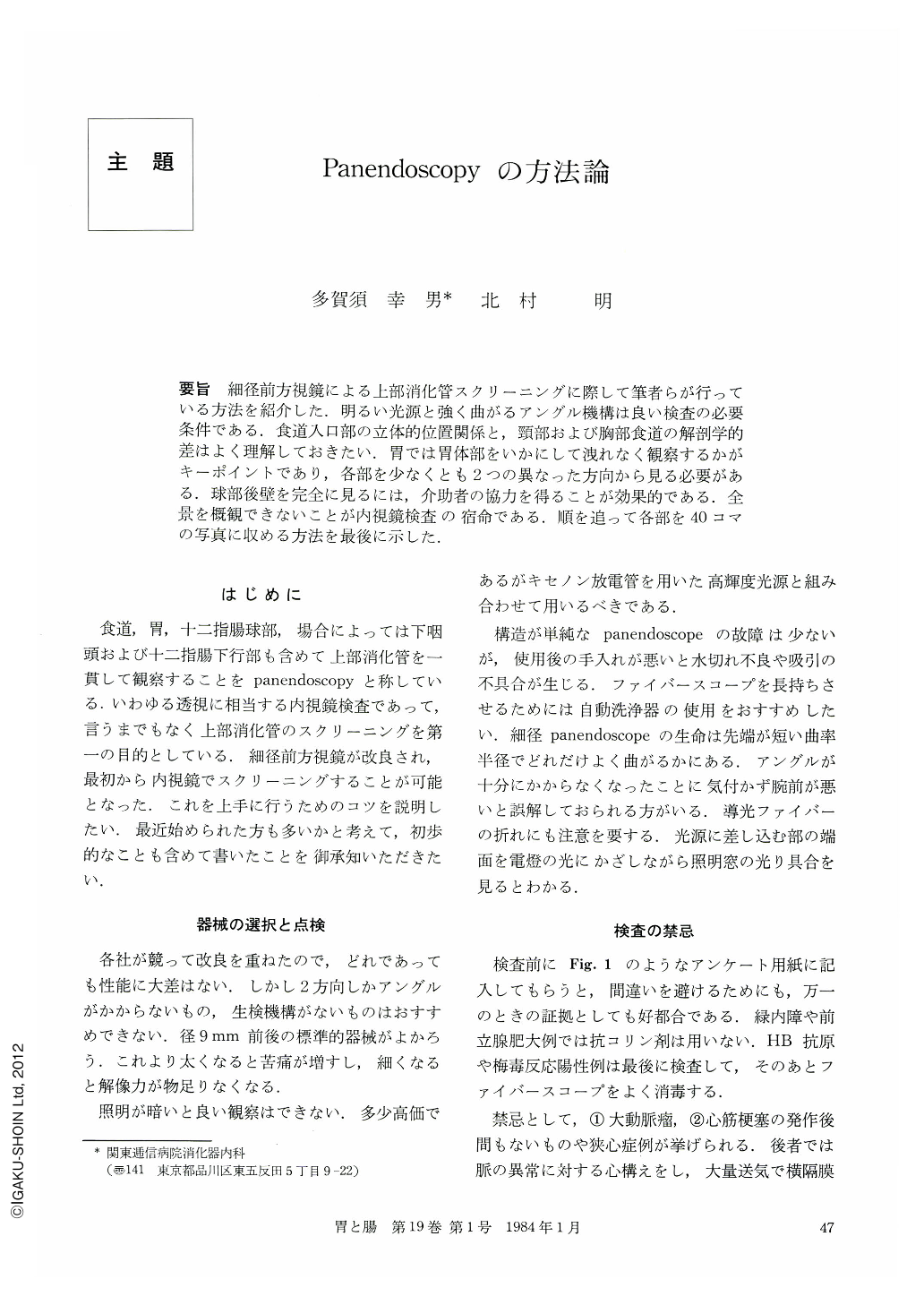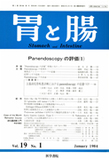Japanese
English
- 有料閲覧
- Abstract 文献概要
- 1ページ目 Look Inside
要旨 細径前方視鏡による上部消化管スクリーニングに際して筆者らが行っている方法を紹介した.明るい光源と強く曲がるアングル機構は良い検査の必要条件である.食道入口部の立体的位置関係と,頸部および胸部食道の解剖学的差はよく理解しておきたい.胃では胃体部をいかにして洩れなく観察するかがキーポイントであり,各部を少なくとも2つの異なった方向から見る必要がある.球部後壁を完全に見るには,介助者の協力を得ることが効果的である.全景を概観できないことが内視鏡検査の宿命である.順を追って各部を40コマの写真に収める方法を最後に示した.
With the implementation of a thin tube forwardviewing endoscope, panendoscopy has replaced conventional fluoroscopy for screening examination of the upper GI tract. The essentials in the use of panendoscope are discussed. Sufficient illumination and a markedly controllable tip are required. The examination is contraindicated only for those with aneurysm, recent attack of myocardial infarction, marked difficulty in spitting and for un-cooperative patients.
How to introduce a fiberscope into the esophagus is illustrated in Fig. 2. The observation of the esophagus starts from the thoracic esophagus. A special consideration is necessary for the complete observation of the gastric body. The posterior wall is a difficult portion to study and how to solve it is shown in Fig. 3 to 5. For the examination of the duodenal bulb, delicate handling of the panendoscope back and forth by an assistant is useful.
For the perfect panendoscopy, a sequence of observation shown in Fig. 6 followed and 40 photos of catch part were taken even though no pathologie is detected. Thus, the above studies have shown that biopsy is a part of panendoscopy and its indication for every ulcers, polyps and suspicious erosions is recommended.

Copyright © 1984, Igaku-Shoin Ltd. All rights reserved.


